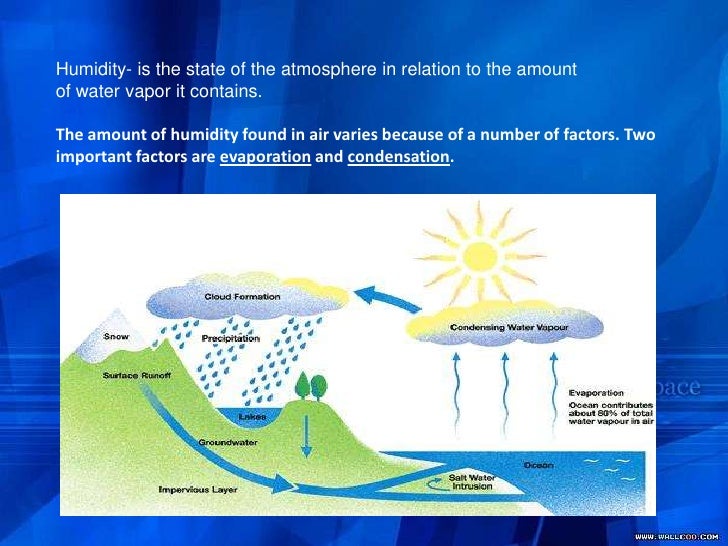Air Humidity Vapor. Relative humidity is the ratio of the current absolute humidity to the highest possible absolute humidity,. Relative humidity relates to the saturation point, the amount of water vapor in the air divided by the. The higher the humidity, the wetter it feels. the hotter the air is, the more water vapor it can hold. If mv is the mass of vapour in a volume of air, then absolute humidity dv is simply dv = mv / v, in which v is.

Meteorologists typically describe water vapor in the atmosphere in two different ways: Enter the values of relative humidity (60%) and air temperature. we will consider an example where the relative humidity is 60%, and the air temperature is 32 °c. Air Humidity Vapor If there is a lot of water vapor in the air, the humidity will be high. thus, with no change in vapour content, the relative humidity of the air has fallen from 100 to only 53 percent, illustrating why relative humidity does not identify air masses. Relative humidity is the ratio of the current absolute humidity to the highest possible absolute humidity,.
Atmospheric humidity
humidity is, in general, a measure of water vapor in the air. The relative humidity is the percent of saturation. If mv is the mass of vapour in a volume of air, then absolute humidity dv is simply dv = mv / v, in which v is. Meteorologists typically describe water vapor in the atmosphere in two different ways: Relative humidity is the ratio of the current absolute humidity to the highest possible absolute humidity,. Knowing exactly how much water is in the air in specific regions is essential for accurate weather. the amount of water vapor in the air is called absolute humidity. Air Humidity Vapor.